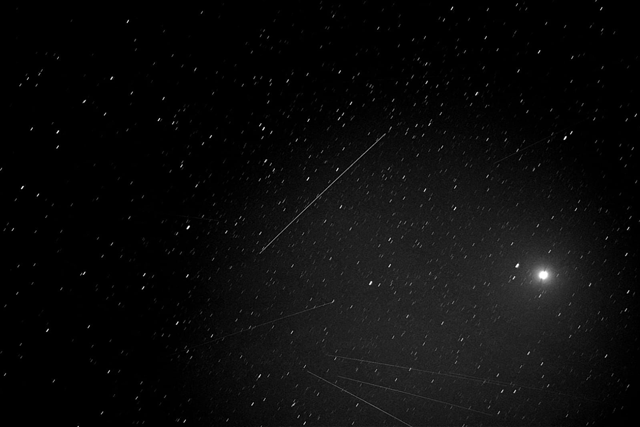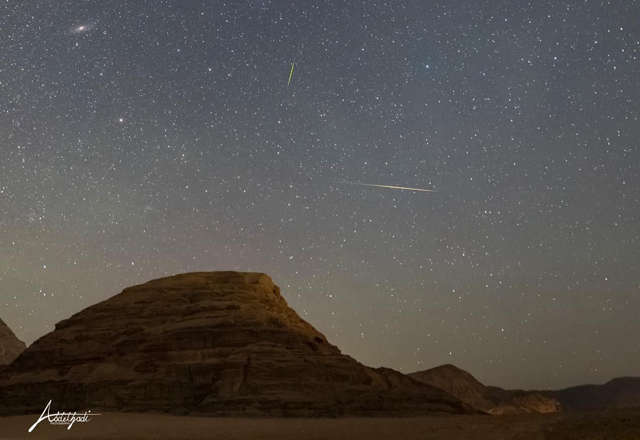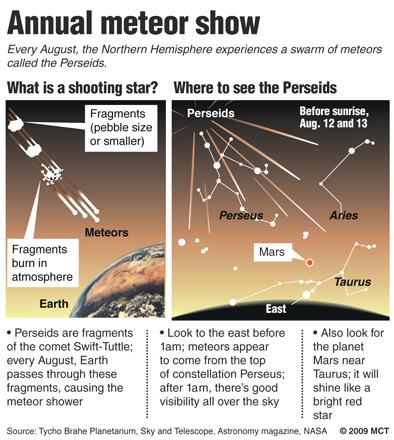You are here
Geminids meteor shower illuminates Jordan’s sky, reaching peak intensity mid December
By Rayya Al Muheisen - Dec 04,2023 - Last updated at Dec 06,2023

The Jordanian sky is ready to host the peak of the Geminids meteor shower on the evening of Thursday, extending into Friday, according to the Jordanian Astronomical Society (Photo courtesy of Ammar Al Sakaji)
AMMAN — Jordan’s sky will witness the peak of the Geminids meteor shower on the evening of Thursday, extending into Friday, according to the Jordanian Astronomical Society.
Ammar Al Sakaji, president of Jordanian Astronomical Society told The Jordan Times that the Geminids meteor shower, active from December 4 to 20, will culminate at 2:36am on Friday. He added that the prime times for observing the meteors are Thursday evening from 8:00pm until Friday morning.
“This celestial event will be visible in most areas of Jordan and the Arab world, particularly in regions with optimal observational conditions, such as low light pollution areas like deserts and rural regions, clear skies, low humidity, and minimal dust,” Sakaji added.
According to the International Meteor Organisation’s 2023 calendar, the maximum meteor rate is anticipated to reach approximately 150 meteors per hour under standard and ideal conditions. However, accounting for local astronomical conditions and Jordan’s geographical location, this rate is expected to decrease to around 139 meteors per hour at the peak radiation center in the Jordanian sky at 2:36am on Friday, under standard astronomical conditions. The radiation centre is expected to manifest in the eastern direction within the Gemini constellation, said Sakaji.
He added that this year, the likelihood of viewing the meteors is heightened due to the crescent moon with an illumination of 4.3 per cent, setting at 6:52pm on Thursday, just prior to the ascent of the radiation centre.
Sakaji advises skywatchers to scan the entire sky in all directions, not solely focusing on the radiation centre. “NASA has highlighted that the Geminids meteor shower is projected to be the most intense and luminousof 2023,” said Sakaji.
He explained that the Geminids meteor shower is an extraordinary astronomical phenomenon resulting from a fusion of a rocky comet and the asteroid 3200 Phaethon, belonging to the Apollo group of asteroids.
This distinguishes it from other meteor showers originating solely from comets, when debris and dust from the asteroid’s orbit intersect with Earth’s orbit and enter the atmosphere; they react with its components, burning at altitudes ranging from 80 to 100 kilometres. This interaction results in meteor showers, with heightened intensity when associated with a specific comet or asteroid. These meteoroids, often smaller than chickpeas, create colourful and luminous streaks and fireballs, posing no danger as they burn in the upper atmosphere and transform into ash.
“The Geminids meteor showeris named after its radiant point in the Gemini constellation, one of the zodiac constellations within the apparent path of the Sun, known as the ecliptic,” Sakaji added.
Sakaji clarified the distinction between the Gemini constellation and “Gemini Zodiac” — the correct scientific name for the Gemini constellation within the zodiac. “The constellation is situated between the Taurus and Cancer constellations, following the guidelines of the International Astronomical Union,” said Sakaji.
Related Articles
AMMAN — Meteor enthusiasts and stargazers in Jordan are in for an astronomical treat this weekend as the annual Leonid meteor shower is set
AMMAN — A rare green comet is due to make its closest pass by Earth on Wednesday, Jordanian Astronomical Society (JAS) President Ammar Sakaj
AMMAN — Jordanians will be able to observe the Perseid meteor shower, which will light up the Kingdom’s skies as of Tuesday midnight, Chief

















